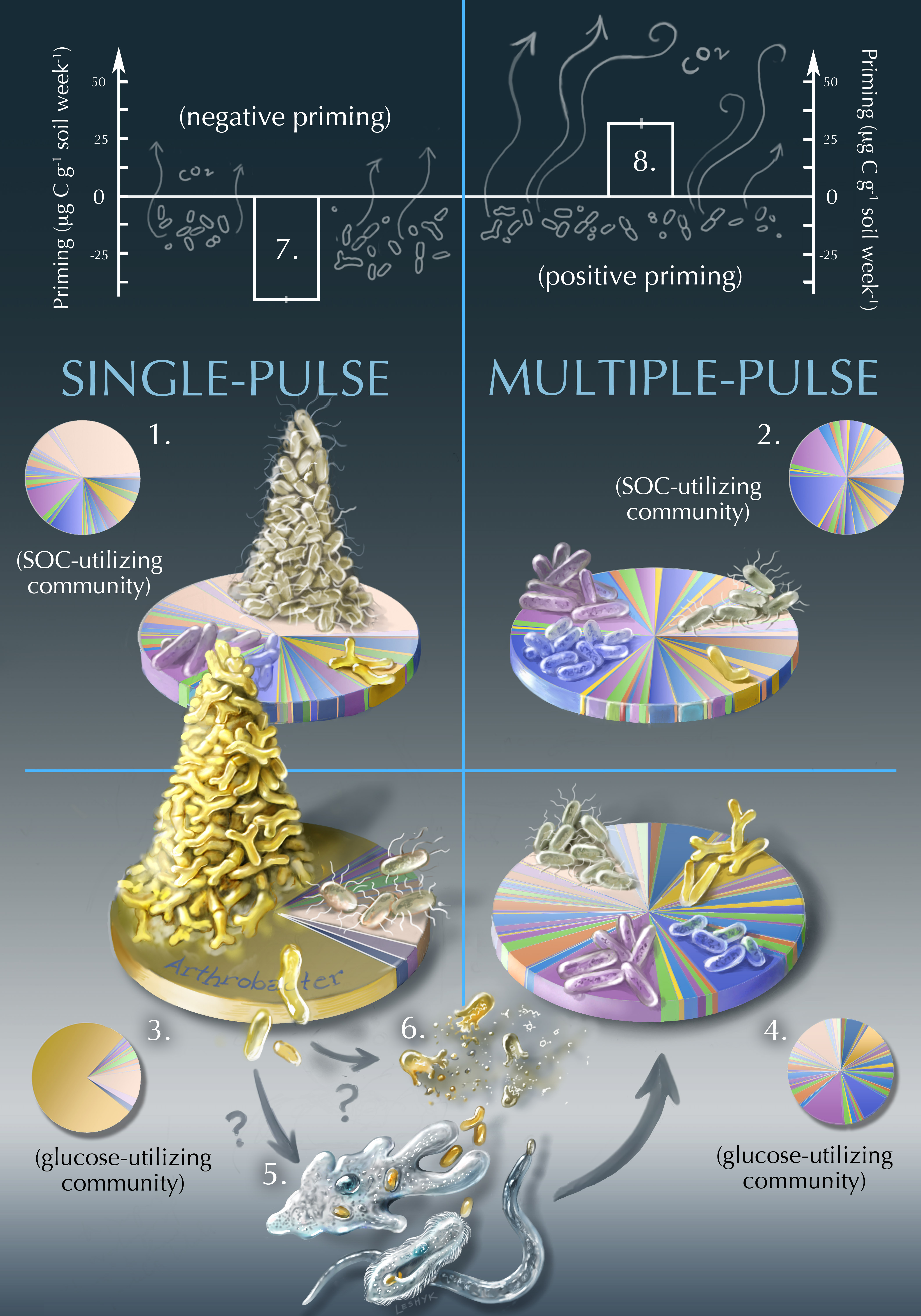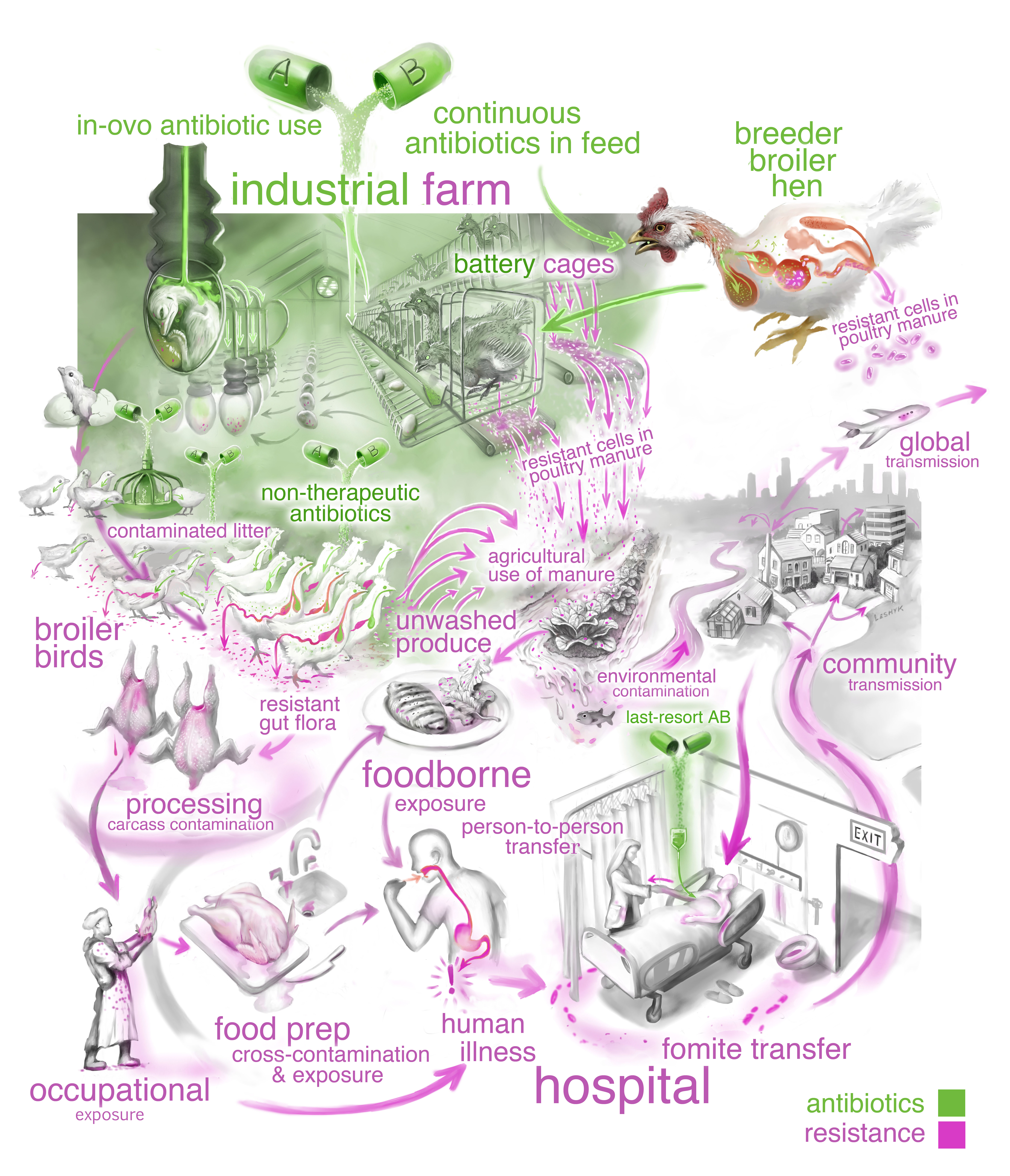Linking soil bacterial biodiversity and soil carbon stability

 Native soil carbon (C) can be lost in response to fresh C inputs, via the “priming effect,” a phenomenon observed for decades yet still not understood. Using dual-stable isotope probing, Ecoss research showed that priming involves changes in the diversity and composition of two functional bacterial groups: a single-substrate pulse of added glucose suppressed native soil C loss and reduced bacterial diversity (shown here as the large pile of one dominant bacterial taxon per each of the two soil communities), whereas repeated substrate pulses stimulated native soil C loss and increased diversity. Increased diversity after repeated C amendments contrasts with resource competition theory, and may be explained by increased predation (roundworms, amoebae, etc. shown at bottom) as evidenced by a decrease in bacterial 16S rRNA gene copies, implying an overall reduction in bacterial populations.
Native soil carbon (C) can be lost in response to fresh C inputs, via the “priming effect,” a phenomenon observed for decades yet still not understood. Using dual-stable isotope probing, Ecoss research showed that priming involves changes in the diversity and composition of two functional bacterial groups: a single-substrate pulse of added glucose suppressed native soil C loss and reduced bacterial diversity (shown here as the large pile of one dominant bacterial taxon per each of the two soil communities), whereas repeated substrate pulses stimulated native soil C loss and increased diversity. Increased diversity after repeated C amendments contrasts with resource competition theory, and may be explained by increased predation (roundworms, amoebae, etc. shown at bottom) as evidenced by a decrease in bacterial 16S rRNA gene copies, implying an overall reduction in bacterial populations.


